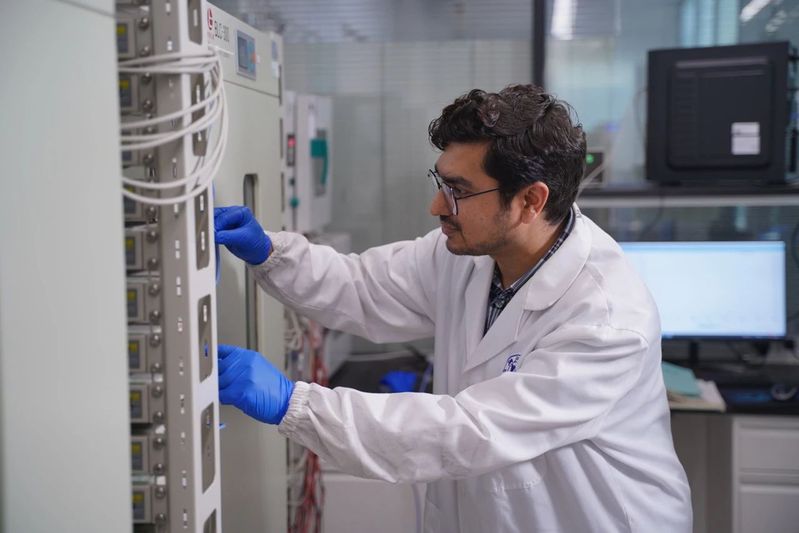In the journey for sustainable energy solutions, sodium metal batteries (SMBs) have gained considerable attention as a feasible alternative to lithium-ion batteries due to the sodium abundance and lower cost. However, the practical application of SMBs is limited by issues such as dendrite growth, low cycling stability, and safety risks.
Recently, Prof. Muhammad Yousaf's research group at Future Science Research Institute, ZJU-Hangzhou Global Scientific and Technological Innovation Center (HIC-ZJU), discovered how to address these challenges through a novel modification of the polypropylene (PP) separator, which significantly enhances battery performance and lifespan. Their results were published in Journal of Energy Chemistry in September 2024.

Innovative Separator Design
The team developed a multifunctional double-layer separator (PP@HCS-NaF), combining nitrogen-doped mesoporous hollow carbon spheres (HCS) as an inner layer and sodium fluoride (NaF) as an outer layer. This structure not only enhances the uniform distribution of sodium ions (Na⁺) but also forms a robust NaF-rich solid electrolyte interphase (SEI) that stabilizes the anode and reduces Na⁺ diffusion barriers.

Exciting Results in Practical Battery Use
1. Long-Term Cycling Stability:
The PP@HCS-NaF separator demonstrated outstanding cycling stability in practical Na||Na symmetric cells, with a lifespan exceeding 6000 hours at 1 mA cm⁻². This stability marks a significant improvement, showing that the battery can perform reliably over extended periods, ideal for real-world applications.
2. Fast Charging and Rate Capability:
When tested in Na||NVP full cells, the modified separator allowed for high rate capability. The battery retained a capacity of ~81 mAh g⁻¹ after 3500 cycles at 1C. Even at a very high rate of 15C, the capacity remained ~70 mAh g⁻¹, demonstrating that the battery can charge quickly while maintaining high capacity. This is particularly important for fast-charging applications like electric vehicles, where rapid energy replenishment is critical.
3. Rate Capability:
The PP@HCS-NaF separator enabled the battery to charge at very high rates. In Na||NVP full cells, even at 15C, the battery maintained high capacity, demonstrating that fast charging is possible without significant loss of performance. This rate capability means the battery can charge in a fraction of the time required for conventional systems, positioning it as a strong candidate for electric vehicle (EV) batteries.
The breakthrough design for sodium metal batteries not only improves stability and cycling life but also offers the potential for fast charging at high rates. These innovations pave the way for next-generation sodium metal batteries to compete with, and possibly surpass, lithium-ion batteries in both cost-efficiency and practical application. “Stay tuned for more updates,” emphasized Prof. Yousaf, “as this technology is poised to revolutionize energy storage and electric vehicle markets.”












